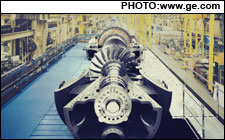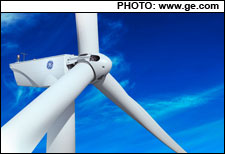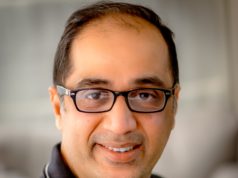 Mark Kleinman, Senior Managing Director and General Manager – Sales and Project Finance, GE
Mark Kleinman, Senior Managing Director and General Manager – Sales and Project Finance, GE
India plans to build new infrastructure worth $1 trillion during the 12th Five-Year Plan period (2012-2017). Realising that goal, though, poses a major challenge given the funding constraints. During a recent visit to India, Mark Kleinman spoke to Debdeep Chakraborty about how the company that had arranged $40 billion of finance for more than 3,000 infrastructure projects across the globe could aid in the country’s infrastructure development.
Globally, it seems that the infrastructure asset class has successfully weathered the economic storm with many investors claiming that their investments remained resilient during the financial crisis. Do you agree with that assessment?
Infrastructure is an attractive asset class right now and it is sort of the asset class that a lot of investors are asking about. It has got long duration and big yields. In an environment when investors are invested in government bonds at 2 or 3 percent, they are looking for opportunities. One of the things that we do at GE is help connect investors with opportunities. Customers know how to do infrastructure. They know what to do there but they need equity capital and debt capital. What we can do at GE is help connect them with investors. The investors are looking for opportunities. There are pension funds sitting in Western Europe, the US. There is tremendous interest in India but these investors don’t have footprints here. So they don’t have the ability to find the right projects, assess the projects or the sponsors.
GE has got huge footprints. We are over 100 years old with 13,000 people and based in multiple cities. What we are trying to do is connect the capital with customers. Infrastructure is a great asset class. The interest in it has been maintained throughout the financial crisis. What we have now is a situation where banks might be a bit constrained but there is tremendous amount of money in the non-banking sector which is looking for good investment opportunities and we might be able to connect that with good projects needing capital.
India’s 12th Five-Year Plan period (2012-2017) has set an infrastructure investment target of $1 trillion. Half of it is expected to come from private sector funds. Can you throw some light on GE’s involvement at present in infrastructure projects in the country and the company’s future roadmap for participation in the trillion dollar opportunity that is being offered?
The opportunity in infrastructure is huge everywhere and some people talk about global $20-30 trillion of infrastructure needs over the next decade or so. There is a funding gap between that and the traditional providers which were banks. The banks are constrained by higher capital requirement and regulations now but there is a lot of money sitting in the non-banking sectors. There is money in pension funds, insurance companies, private equity and sovereign wealth funds. These people need duration and yield. So, if the projects present themselves in a solid economic fashion, these people want to invest. They come to GE and ask us to help them find opportunities.
On the other hand, we have sponsors who want us to help find investors. Bringing the two together will probably increase the capital flows substantially over the next few years everywhere including India as well as other emerging markets. Customers really need this total solution that we can bring and not just the equipment. It is great news when somebody says there will be trillion dollars worth of infrastructure because what we are going to do then is get into the details, meet the right people and figure out how to connect them with the right investors. The interest in investing in infrastructure in India is huge.
As far as our presence in India goes, we are into manufacturing and R&D and growing both. With regard to projects, we are involved in the wind sector and thermal power sector. We are also very involved in the health sector and designing a lot of health equipment that has good applications in the emerging markets as well as some of the developed markets around the world.

It is expected that there will be a considerable gap between the resources available and the actual requirement for meeting India’s infrastructure investment target of $1 trillion. What are the measures that India needs to initiate to enhance fund availability?
We have to look at it deal by deal because that is how investors invest. As we see transactions and get to work with the sponsors, be it private or public, we want to encourage them to come to GE earlier in the process and not just think of us as the equipment supplier when ready for the RfP. We want the sponsors to think of us as an advisor who can help in all the aspects including equipment, engineering, structuring as well as financial. If brought in early, we can introduce the projects to investors. The right projects will get a lot of interest.
The public-private partnership model has emerged very successful in India’s attempts to build world-class infrastructure. However, the full potential of the model is yet to be fully realised in the country owing to various challenges such as delays in clearances, land acquisition problems and liquidity crunch. What reforms do you suggest to increase the number of projects under the PPP mode?
The PPP model is going around the world. In general, it is a very good model and has been very successful. The model brings together the capacities of the public sector and the private sector. It will develop within the context of each country and each deal that makes sense. We work on a lot of those, engaging with the sponsors, the public or private sectors. If structured well, it can attract a lot of capital. So, we want to see it continue to develop everywhere. How it develops specifically would be different in case of each country and happen at different speeds. We think India is a great place to invest in and there are tremendous opportunities. We want to bring our financial partners and show them the right deals and public private partnerships are a very good way to move transactions forward.
In many countries, long-term bonds form a major share of infrastructure finance. However, the Indian corporate bond market is less than 5 per cent of GDP. What are the measures that need to be undertaken for deepening the corporate bond market in India?
There are capital flows around the world. There are bond markets in other parts of the world looking for opportunities around the globe. We have 100 people in 30 countries who talk to sponsors and developers and also investors. We have formal arrangements with over 20 large investors. It is now truly a global market and capital flows to the best opportunities. We have seen a lot of interest in India. Sitting here, we see opportunities. What we are going to try and do is bring them together. We think there will be tremendous amount of debt and equity available to help India fund its infrastructure development over the coming years.
Insurance and pension funds have the ability to invest for longer terms but in India these institutions are restricted by their respective regulatory bodies which limit their exposure to the infrastructure sector even when they have sufficient funds available to invest. Do you think reforms aimed at increasing investment in the infrastructure sector from insurance companies are immediately required considering funding of infrastructure projects is at present in a state of flux?
Financial regulations vary from country to country but there is a lot of money sitting in companies around the world that really are free from many of the regulations. This money can flow to projects and that is where the global footprint of GE can be helpful. We have seen capital flows from OECD countries to developing countries are huge because the returns are healthy. Every country has its own financial sector and market sector. In this global market, we can help find people around the world who will move capital for investment in the best possible outcomes and enable deals to move forward.

As an asset class, infrastructure has been attracting greater attention from the global investment community in recent times. Can you explain why?
Infrastructure sectors around the world are looking for funds at this time. This includes OECD countries and developing countries. The infrastructure development right now, both in terms of need as well as activity, is huge. The funds are looking for the best place to get to. It is a newer asset class. Investors understood high yield back in the ’80s and mortgages back in the ’90s. They are now looking for the next asset class to invest in. High yield bonds now yield just 7 per cent which is not really high yield. Insurance companies as investors are looking for double-digit yields for 10 to 15 years.
Infrastructure, over the long run, in a diverse portfolio, performs extremely well. The investors, however, can’t just go to a broker and buy infrastructure backed bonds since they don’t exist in large quantities. They need to find the right deals, invest in a number of them and build a portfolio. For investing in the right deals, the investors come to us. Since we have people in all these countries who are responsible looking for money, it is a matter of bringing it together.
Infrastructure projects in India are often plagued by various challenges leading to delays in their implementation. What changes would investors like to see in the country’s policy or regulatory framework relating to infrastructure development?
Infrastructure development is hugely beneficial for every country including India. It creates new jobs and facilitates the creation of new businesses. As new infrastructure such as roads, power plants and water treatment plants get built, more jobs are generated which in turn create the need for more roads, more housing and more power. India is a country which is developing its infrastructure, improving its economy and improving the lives of a lot of people. We, therefore, want to be there and provide complete solution to our potential customers in India. We want to work with more and more sponsors, be it government, private or under PPP. Bringing the capital flows together is a win-win situation for all because the projects get done and the investors get returns. Every country goes through economic and political cycles but in the long term the world’s infrastructure need to be developed so that the lives of people can be improved. This is something GE can help with.











